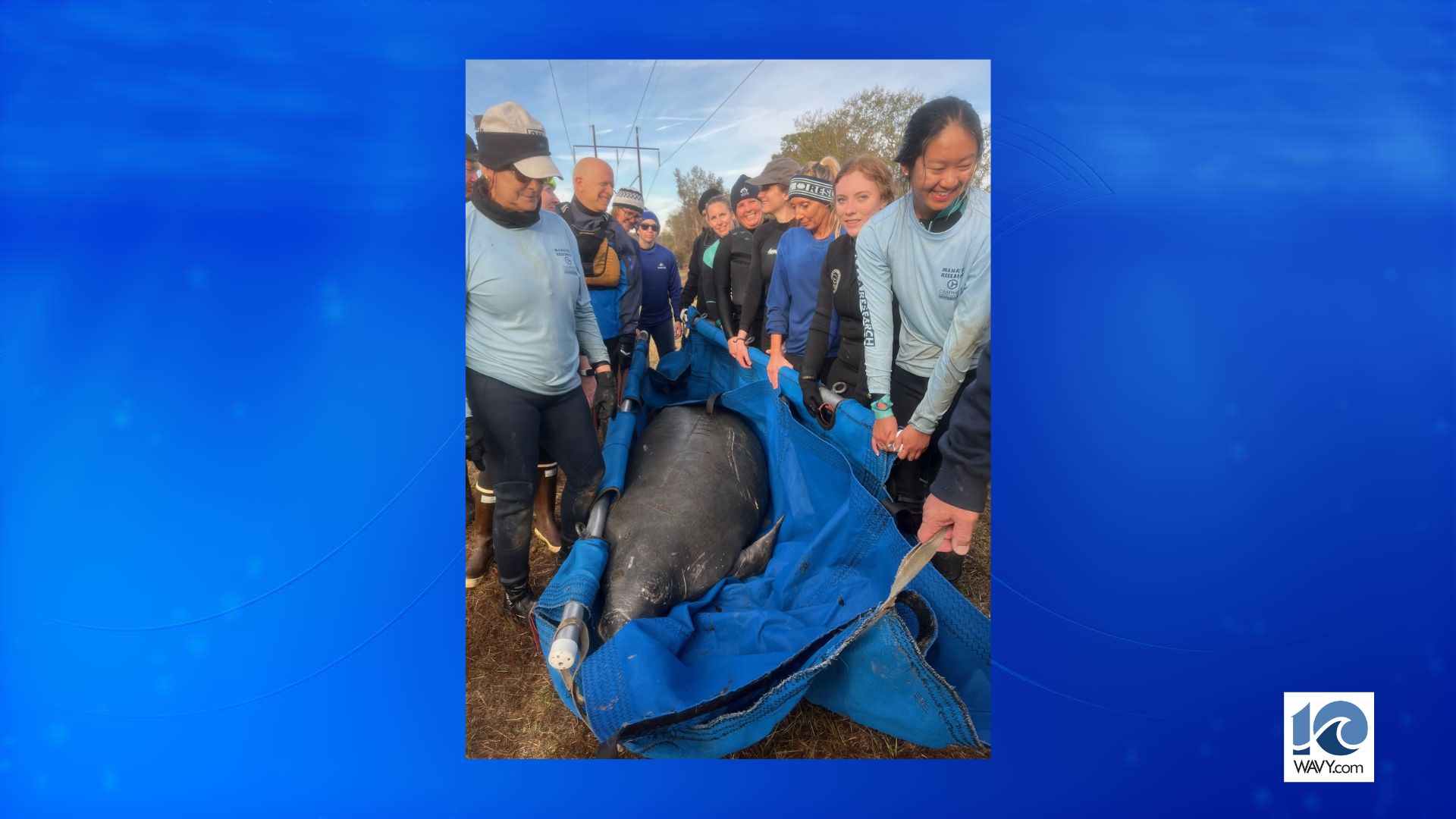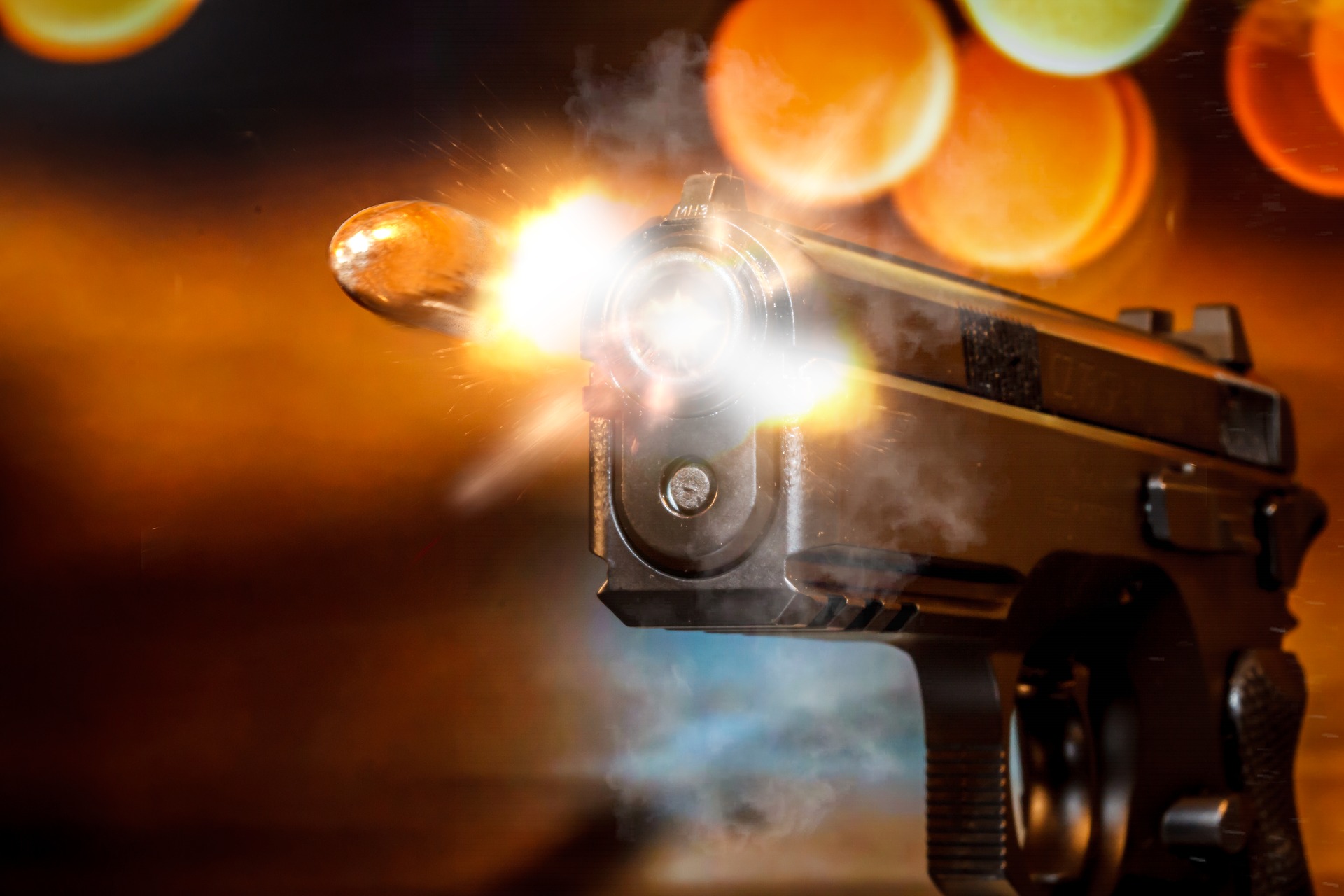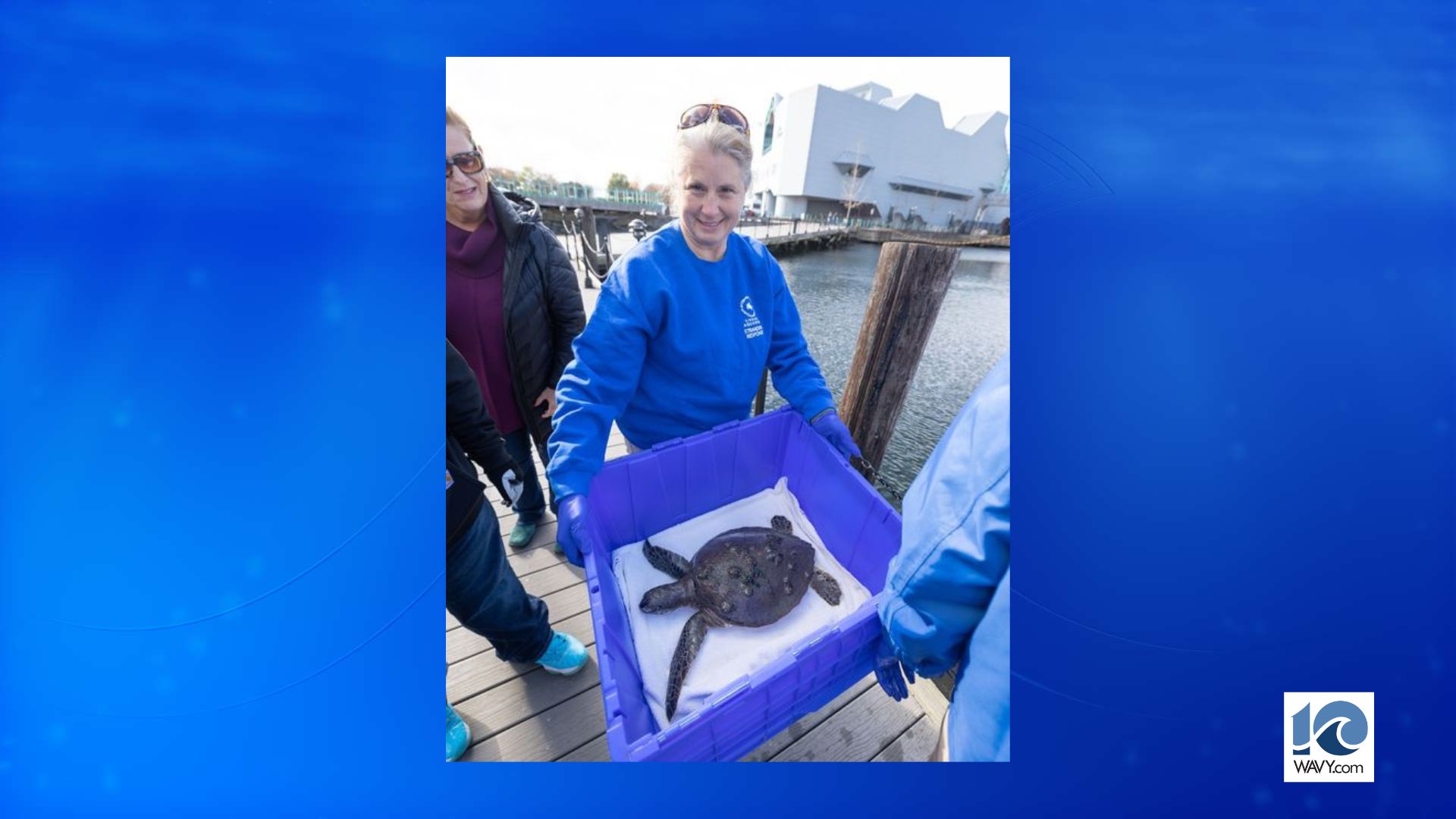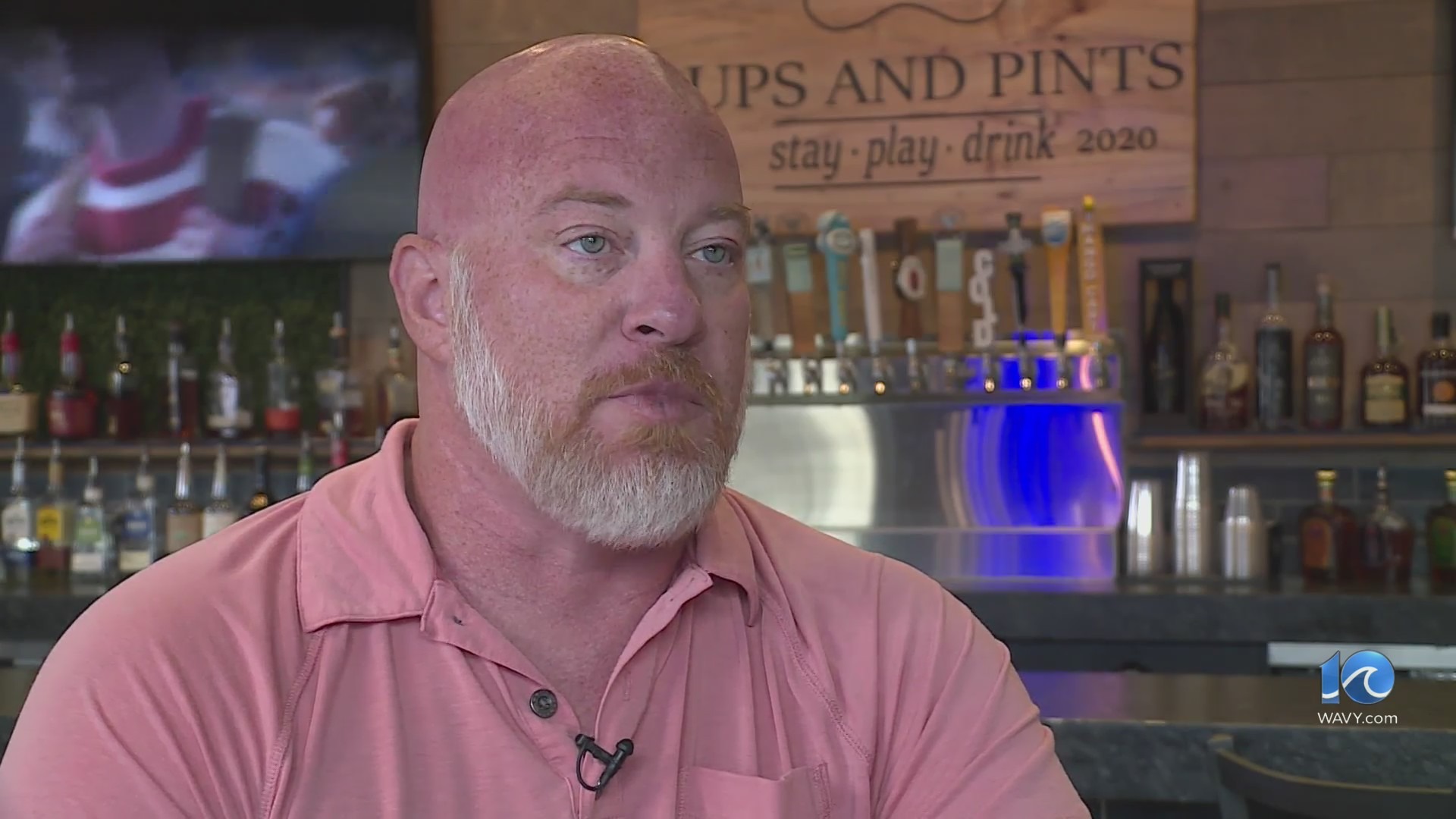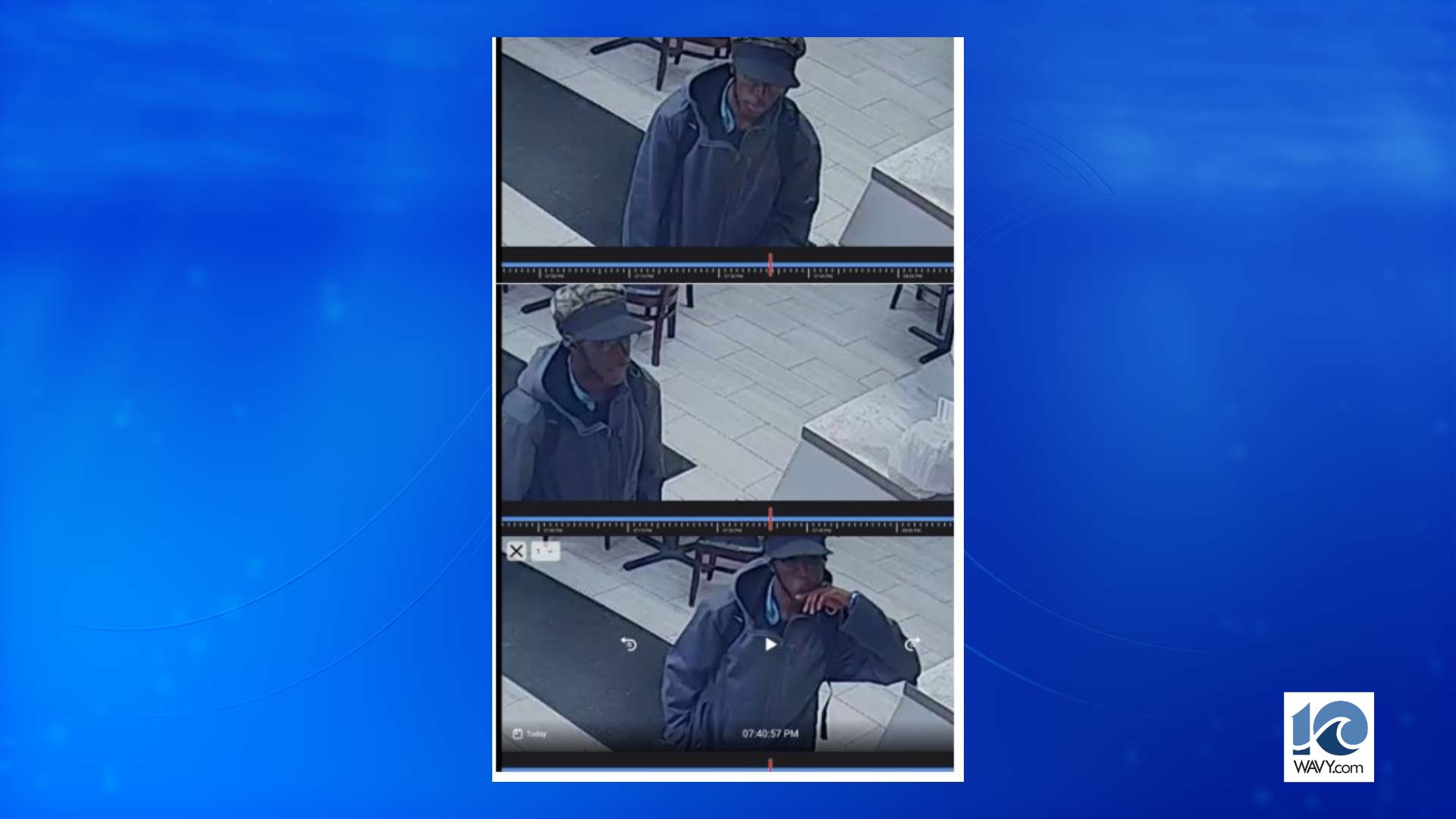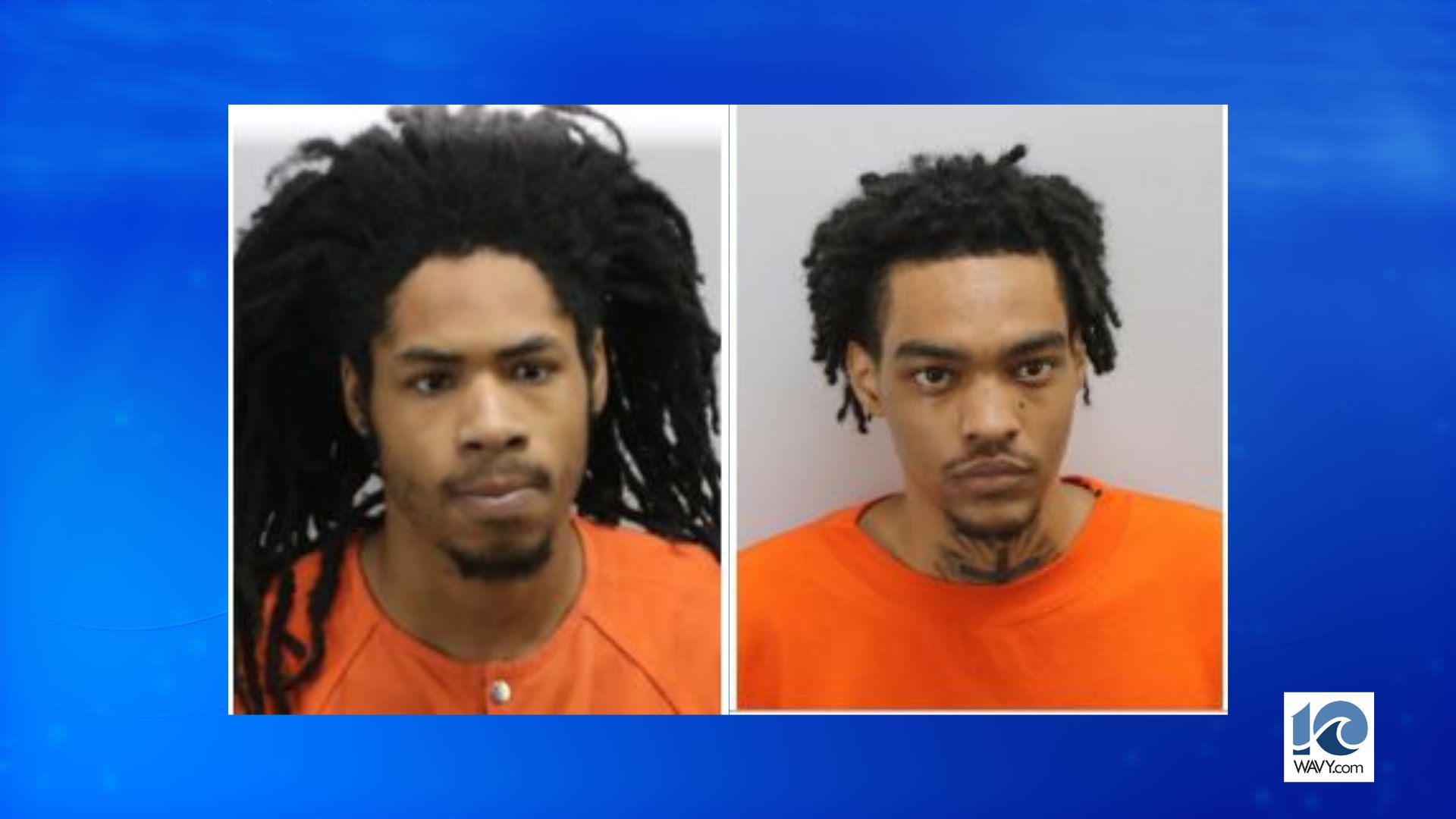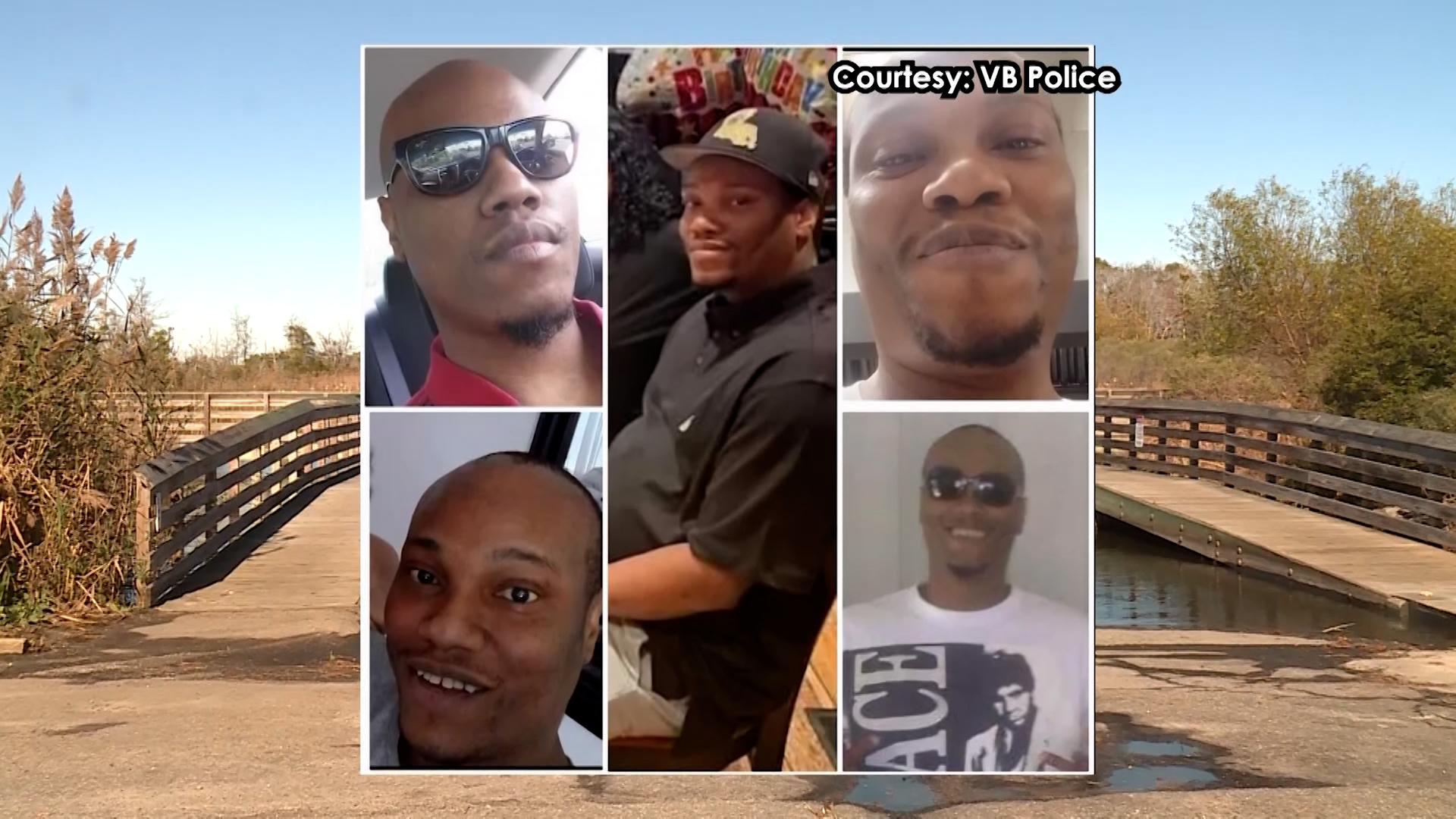COLLETON COUNTY, S.C. (WCBD) – Alex Murdaugh’s brother, John Marvin Murdaugh, gave emotional testimony Monday as the defense’s last called witness in the double-murder trial.
Murdaugh is accused of killing his wife Margaret and youngest son Paul at their family property in June of 2021.
WATCH: ALEX MURDAUGH MURDER TRIAL: DAY 24 RECAP
Get caught up on the Alex Murdaugh investigations
John Marvin cried as he recalled cleaning up his nephew’s remains from the walls and floor of the feed room. He said that as he cleaned, he spoke to Paul and promised that he would find whoever was responsible. He said as of now, he has not fulfilled that promise.
The defense also called two forensic experts to the stand, both offering some counter opinions to testimony offered by state witnesses.
Forensic pathologist Dr. Jonathan Eisenstat testified that he believed the shot that killed Paul was a contact shot to the back of Paul’s head. He testified that the path mapped out by Dr. Ellen Riemer — the pathologist who conducted the autopsies — is not consistent with Paul’s injuries. Dr. Eisenstat said that he agreed with Riemer on most of her other findings, but that Paul’s fatal shot was “textbook contact shot to the back of the head.”
Prosecution asked Eisenstat if he performed autopsies on the victims himself. He said no. They pointed out that he is getting paid over $10,000 to testify, while Dr. Riemer conducted what they say was an independent autopsy.
Timothy Palmbach, a crime scene reconstruction expert, agreed with Eisenstat’s assessment. He says evidence at the crime scene — including bloodspatter analysis of the room — indicates the shot came from the back of the head. Palmbach also testified that the totality of the evidence favors a two-shooter theory. He said that whoever delivered that fatal shot to Paul likely would’ve been temporarily incapacitated — covered in blood/biological matter and possibly injured by ricocheting pellets — and would not have been able to quickly get out of there, pick up another gun, and go shoot Maggie. He also said that it would not make sense for one shooter to have carried two guns, and they would’ve been difficult to maneuver in such short succession. Palmbach also said that he believes — especially after visiting the crime scene — the murders took place in a very short amount of time and it does not make sense that one person could have done it all.
Prosecution pointed out that Palmbach’s findings were based on reports provided to him by the defense and that he had not read the whole case file, claiming he “only saw what the defense wanted him to see.”
Defense attorney Dick Harpootlian emphasized the importance of understanding the layout and proximity of the kennels and the feed room and asked Judge Clifton Newman if the jury could take a trip to Moselle to see it firsthand. Judge Newman agreed.
The trip will be scheduled after prosecution calls their final four — maybe five — witnesses. Testimony from those witnesses is expected to be finished Tuesday or Wednesday.
ALEX MURDAUGH MURDER TRIAL LIVE BLOG:
4:55 p.m. – Defense rests. Defense again makes a motion for a directed verdict. The motion is denied.
State prosecutor Creighton Waters says the state has four, maybe five, reply witnesses. He hopes they can get that done in a day.
Harpootlian says he is skeptical it will all get done Tuesday.
The jury visit to Moselle will not take place until after the state’s final witnesses are called.
Court is set to resume at 9:30 a.m. Tuesday.
4:36 p.m. – Prosecution begins cross-examination.
Prosecution asks about the family’s cooperation with SLED. John Marvin says he was providing full cooperation and would continue to provide that. He says from what he understood, Alex was as well.
Prosecution asks when John Marivn learned that his brother was down at the kennels the night of the murders. He says that SLED called him in the listen to the kennel video and he knew right away it was his brother. Prosecution says that the interview was on August 12, 2022.
John Marvin says that Alex never told him before or after that interview that he was down at the kennels. John Marvin agrees Alex lied to SLED about that.
Prosecution asks if John Marvin was aware Alex had loaned Chief Alexander money. John Marvin says no.
Prosecution asks if John Marvin remembers when Blanca Simpson got to Moselle the morning of June 8. John Marvin says he doesn’t remember exactly when she got there, but he was the first person there.
Prosecution brings up an October interview with Buster during which Buster apparently said he did not recognize the blue raincoat. John Marvin says he does not remember discussing the raincoat at all.
John Marvin is again asked about his father’s condition on June 7. He says that the doctor gave them some hope. Prosecution asks if Murdaugh told Jeanne Seckinger that day that the case was terminal, would Murdaugh have been wrong? John Marvin says he does not believe Murdaugh told her it was terminal, but he wasn’t there for the conversation.
Prosecution asks if John Marvin and his brothers consider the name and legacy important. John Marvin says they do, but he doesn’t think their name is more important than anyone else’s.
4:30 p.m. – Court is back in session. John Marvin continues talking about the false information he received from SLED. He says SLED told them Murdaugh’s t-shirt was covered in blood and that’s how they knew he was at the scene.
They again discuss the morning of June 8 when John Marvin was cleaning the kennels. John Marvin says he told Paul out loud that he loved him and he would find out who did this to him. Griffin asks if John Marvin has found out. John Marvin says that he has not.
4:15 p.m. – Court is taking a 10-minute break.
2:53 p.m. – John Marvin Murdaugh is called to the stand.

John Marvin is Murdaugh’s brother. He is the only Murdaugh son that did not go to law school and now runs an equipment business.
John Marvin lives in Beaufort, so he says his brothers (Alex and Randy) would check on their parents most often because they lived closer.
Griffin asks about Paul and John Marvin gets choked up. He says he is going to have a hard time talking about Paul because they had a very special relationship.
Paul worked for John Marvin over the summers and was working for him in June of 2021. John Marvin says Paul was an excellent worker.
Griffin asks about Alex’s relationship with his sons. John Marvin says it was a wonderful relationship. He says the same of Alex’s relationship with Maggie.
John Marvin took their father to the hospital on June 7 because he was having breathing problems. He said it was initially just a simple visit to understand why he was having trouble breathing, but the doctor said he needed to be admitted to the hospital. John Marvin and his other brother, Randy, sent messages to the family group chat to keep everyone in the loop.
The next day, their father was placed in hospice care. He died June 10.
The last time John Marvin saw Paul was June 7. Paul was at his house playing with his kids in the yard.
Griffin asks about the conversation Alex and John Marvin had while Alex was on the way to Alameda to visit their mom. John Marvin says it was normal. The next call he got from Alex was different. John Marvin says he could hear it in his voice that something bad had happened. He headed to Moselle right away.
John Marvin was driving Paul’s old farm truck because Randy had his truck. The farm truck started breaking down around Yemassee. He called Greg Alexander, a close family friend and the Yemassee chief of police, and asked for a ride. Alexander met him nearby and they drove together until the truck broke down, then Alexander drove him the rest of the way.
John Marvin says that when he arrived, Alex was distraught. He says he isn’t even sure if they talked, they just hugged and cried. He says he doesn’t remember any SLED agents being at the house, but he knows they came to collect Alex’s clothes.
The next day, John Marvin went back to Moselle. At some point, he went back to the kennels. He said he felt like he just needed to see for himself. Before he went, he asked a friend in law enforcement whether it was okay if he could go since it was a crime scene. The friend called a few minutes later and said that SLED captain Ryan Neil had released the crime scene.
John Marvin gets emotional describing the feed room. He says it had not been cleaned up. He saw blood, brains, pieces of skull, etc. He says that he felt like he needed to clean it up because he owed that to Paul. He started cleaning. He says no mom or dad or aunt or uncle should ever have to see what he saw. He says it was the hardest thing he has ever been through in his life.
Later, John Marvin says it was brought to his attention that Maggie’s phone was not there. He and Buster looked up the location of her phone on Find my Friends and John Marvin showed the location to some SLED agents and asked if they wanted to go find it. The SLED agents told him no, because they had technology coming later that day they could use to locate the phone. John Marvin said he was shocked. He went over to solicitor Duffy Stone and some agents from his office and told them the same thing. They rode down to where it was pinging and found it in a matter of minutes. They didn’t touch the phone, they called SLED to collect it. SLED asked if John Marvin knew the passcode, so he called Alex, got the passcode, and gave it to SLED.
Griffin asks about the June 8 SLED release saying there was no threat to the public. John Marvin says he was, and still is, baffled. He says the release made it seem like whoever did it was in jail.
John Marvin walked SLED agents through the house as they looked for evidence. He says that the SLED agent asked him to walk through with her. She said that she was looking for guns and ammunition matching the suspected murder weapons, but she also looked for other things in areas where you wouldn’t find a gun, like sinks and showers.
John Marvin helped facilitate communication with SLED. He says Alex gave blanket consent for searches of his property. John Marvin says no one asked to search Alameda. Had they, John Marvin says he would’ve obtained consent and gone over there himself to show them places they may not have known about.
On June 10, SLED went to John Marvin’s hunting property to interview family members. That is the interview during which Alex said somebody “did him so bad” referring to Paul. The state claims Alex said “I did him so bad,” while Murdaugh’s team claims he said “they did him so bad.” John Marvin says 100% Alex said “they did him so bad,” and he had heard Murdaugh say it many other times since the murders.
Griffin asks about Alex’s demeanor after the murders. John Marvin says you can use any word –distraught, broken, etc — but there is no word to adequately describe how devastated Alex was. He says he would have to create a new word to convey the level of Alex’s grief.
Griffin asks if anyone mentioned the boat accident as motive for the murders the night of June 7. Randy says yes. He says when he was on the way over there with Chief Alexander, Alexander asked if the boating accident may have had something to do with it.
They move on to discuss where people park when visiting Alameda. John Marvin says there are a few places to park there depending on who else is there and where you are going. He says it is not uncommon to park around the back of the house, in fact, he parked there yesterday.
Griffin asks about the roadside shooting. He asks if John Marvin knew about Alex’s addiction before then. John Marvin says he was not. He and Randy took Alex to the detox facility near Atlanta after he was released from the hospital in Savannah.
When asked about Alex’s condition, John Marvin says he has never seen anything like it. He says Alex was sweating, thrashing about, twitching his legs, throwing up, and having uncontrollable diarrhea.
After the facility in Atlanta, Randy and John Marvin took Alex to another facility in Orlando. John Marvin says Alex was not as bad on that drive. He was not twitching and throwing up, but John Marvin says Alex had terrible nightmares that he believes were about Paul and Maggie.
Griffin asks about the blue raincoat. John Marvin says that SLED told them they seized a coat from a closet. Later, they told him it was found in a different location. John Marvin says he still has not received an explanation for why two different locations were given.
John Marvin says that he was given inaccurate information from SLED about the evidence against Alex. He says that SLED claimed they had a white t-shirt covered in blood and that Murduagh had wiped his face with the bottom of it.
1:24 p.m. – Court is breaking for lunch and will return at 2:45 p.m. Defense has one more witness to call.
1:16 p.m. – The state beings cross-examination of Palmbach.
Prosecution points out that Palmbach just went to the scene last Friday. He says that most of his analysis was done prior to that based on evidence provided to him.
Prosecution asks if Palmbach reviewed the entire case file. He says he does not know.
The state asks if Paul’s shooter would’ve been covered in blood. Palmbach says yes. Prosecution asks if there were any other bloody footprints in the feed room, implying the prints in the photos of the feed room were Paul’s. Palmbach says that from what he read, the prints were not definitively identified as Paul’s. Prosecution says Palmbach only saw what defense wanted him to see.
Prosecution asks, wouldn’t Paul’s whole head have been blown off if he had been shot in the back of the head at close contact. Palmbach says that Paul’s injuries were consistent with a contact wound. He says his whole face was not blown off because much of the energy escaped through the entrance wound, which was the back of the head.
12:01 p.m. – Timothy Palmbach is called to the stand.

Palmbach is an expert in crime scene reconstruction and analysis, with special focuses on blood stain analysis and shooting reconstruction.
He reviewed autopsy reports, crime scene photographs, and more for this case. Palmbach said that immediately after reading the reports, he was concerned by Dr. Riemer’s conclusion that the wound on the back of Paul’s head was an exit wound. He said based on his experience, it was clearly a contact entrance wound. He suggested to defense that they hire a forensic pathologist.
Palmbach agrees with previous testimony that the first shot to hit Paul was into his chest. He says the shooter was definitely outside of the door, but exactly where is dependent on a lot of factors. Both shell casings were found in the feed room, so Palmbach assumes that the barrel was inside the room at least. Palmbach says he thinks the gun used was a semi-automatic.
Griffin asks if Palmbach saw evidence Paul tried to defend himself. Palmbach says no, he thinks Paul was startled by the shot and did not have the opportunity. He also saw no evidence of defensive action.
Palmbach says that in his personal experience, you never see the type of destruction that occurred with Paul unless there is a contact wound from a high-energy source weapon. Griffin asks about the biological matter at the top of the door. Palmbach says that is completely consistent with the shot being to the top/back of Paul’s head. He says the spatter often comes back out of the entrance wound.
Griffin asks where the shooter would’ve been for the shot to the head. Palmbach says that the shot was a contact shot, but the exact distance depends on the length of the barrel of the gun. The shooter would’ve been closer to Paul than he first shot, though, Palmbach says.
Palmbach says that the shooter would’ve been covered in blood, biological matter, pieces of the skull, and likely some of the pellets. He says all of that would’ve followed the pathway of the barrel. The shooter probably would’ve been injured in some way from the pellets, even if just superficially.
Griffin asks about Dr. Riemer and Dr. Kinsey’s analysis of the shot. Palmbach says he does not think Dr. Riemer’s assumption was correct, and Dr. Kinsey based his reconstruction on that, so he was not correct either. Palmbach says that none of the evidence is consistent with an upward trajectory as Dr. Kinsey believed, and all is consistent with a downward contact shot.
Palmbach reviews bloodspatter and biological material patterns — and void areas — around the feed room that he believes give an indication of where the shooter was standing. He believes the shooter was in the room. Palmbach said that the evidence does not match the shooter being outside of the room for the second shot.
They move on to discuss the reconstruction of Maggie’s murder. Palmbach says that all of the wounds face the shooter.
Griffin asks if Maggie’s shooter would’ve had bloodspatter on them. Palmbach says it is possible.
Griffin asks if Palmbach believes there were one or two shooters. Palmbach says that the evidence suggests that there were two shooters. He explains that Paul’s second shot would’ve produced an enormous amount of back-spatter of blood, biological materials, skull fragments, and pellets. That shooter would’ve likely been incapacitated, at least for a brief period of time, and would not have been able to go pick up another gun, run out, and shoot Maggie. He believes everything happened very quickly.
Palmbach also says that there is a logical reason that defies a one-shooter theory: two different weapons were used. He says it would be hard to maneuver two weapons in such quick succession.
Griffin asks if a footprint analysis would’ve been helpful in the feed room if the shooter had been standing in the room for at least one of the shots. Palmbach says yes, it is not his area of expertise, but spraying a reagent to illuminate latent prints absolutely should’ve been done. He says he saw no attempt to check the dirt in the area and properly photograph/analyze footprints there as well. He also saw no attempt to check for fingerprints in the feed room.
11:49 a.m. – Prosecution begins cross-examination.
Prosecution asks if it is the pathologist’s job to determine the time of death. Eisenstat says the coroner usually goes to the scene and collects the information, but forensic pathologists must determine if the information fits.
Prosection asks if Eisenstat performed an autopsy on Maggie or Paul. He says he did not.
The state points out that Eisenstat has made over $10,000 in this case. They ask why he did not write a report on his findings. He says he was not asked to, and the report would’ve been the same as his testimony.
Prosecution asks if Eisenstat said that whoever shot Maggie was taller than her. Eisenstat says no. He said that Maggie was likely bent over and the shooter was at an elevated position.
The state asks if Paul was shot in the back of the head, why did the pellets not spread out. Eisenstat says that the pellets stayed together through the head and then began to spread out.
In Dr. Riemer’s report, she did note that there was soot or stippling for certain injuries, but not for the top of the head injury.
Prosecution asks if Paul’s face was “blown off.” Eisenstat says no.
Prosecution shows a picture of Paul’s brain and asks if it looks macerated or splattered everywhere. Eisenstat says no, but it has been ejected from the head and you can tell it suffered a traumatic injury.
In court, Alex Murdaugh has his eyes closed and appears to be shaking.
Prosecution shows bloodspatter on the top of the door, which Eisenstat says is consistent with blowback. Prosecution asks about crime scene photos showing containers on a shelf with bloodspatter.
Prosecution asks what Eisensta determined as the manner of death for Maggie and Paul. He says homicide.
11:32 a.m. – Court resumes. Eisenstat sketches out some characteristics of contact wounds. They then review images of Paul’s wounds. Eisenstat says that the wound to the shoulder is not indicative of the pellets moving up, but instead going down. He says he does not believe it is a graze wound.
Harpootlian asks why the brain was not shredded by the pellets. Eisenstat says that the pressure of the shot likely blew the brain out before the pellets had the chance to shred it. He said that the brain likely did sustain traumatic damage, but there were no autopsy photos of it taken. Riemer did note that the brain arrived in a separate bag, and Eisenstat saw scene photos of the brain.
Harpootlian asks if the muzzle/barrel of the gun would’ve been covered in bloodspatter and biological material. Eisenstat says absolutely.
11:12 a.m. – The jury is sent to the jury room for a break.
9:48 a.m. – The jury is brought in.
Dr. Jonathan Eisenstat, a forensic pathologist, is called to the stand.

Harpootlian says that the exhibits and discussion during his testimony will be extremely graphic. Most of the evidence will be under seal and members of the family have been given permission to leave during testimony.
Eisenstat explains his qualifications and is accepted by the court as an expert in his field.
Harpootlian says he wants to get to it before prosecution does and asks Eisenstat if he is being paid by the defense. Eisenstat says he is and that it is normal in his line of work.
Harpootlian asks if and how the coroner should check the body temperature when they arrive on scene. Eisenstat says yes, the body and the ambient temperature in the area should be checked and compared.
Eisenstat says a thermometer should be placed in the room near the body to measure the temperature of the air. To measure the temperature of the body, a rectal temperature should be taken for the most accurate reading.
Harpootlian asks if sticking hands under the victim’s armpits, as Colleton County Coroner Richard Harvey said he did, is an accurate method of determining body temperature. Eisenstat says no.
Harpootlian presents Dr. Ellen Riemer’s findings. She is the MUSC pathologist who conducted the autopsies and previously testified. Riemer reviewed those along with autopsy photos and some scene photos to come to his conclusions.
Eisenstat reviews Dr. Riemer’s sketch of Maggie’s wounds. He says they are all rifle wounds.
Eisenstat identifies an entrance wound on the left thigh with stippling, meaning the end of the gun was around one to three feet away. He agrees with Riemer’s findings.
They move on to the wounds to the torso, wrist, and head. Eisenstat agrees with Riemer’s findings on those wounds as well.
The wound under Maggie’s left breast is where Eisenstat and Riemer differ. He looks at tears in the skin where the bullet grazed to determine from which direction the bullet came. He believes that the wound came from the front in a downward direction, just like the wound to the top of her head. He says the shots could’ve been fired in succession. Riemer previously testified that one came from the front in a downward direction and one came from behind in an upward direction, as if the shooter circled her.
They move on to discuss Paul.
Eisenstat agrees with Riemer on the chest wound to Paul. It went in through the chest and exited under the armpit, and was shot at a range of one to three feet.
The head wound is where they differ. Eisenstat believes the head wound is a contact wound to the top/back of the head, which caused extreme pressure in the skull, then sent pellets down into the left shoulder.
Riemer identified an opposite path; she believed that the shot grazed the shoulder then went in through his jaw area and exited through the back of the head.
Eisenstat says that since the top of Paul’s head was not shaved he can’t determine the exact point of entry, but he is absolutely sure that the shot was a contact shot. Had they shaved the head, Eisenstat says that they likely would’ve seen soot, which is characteristic of contact wounds.
Eisenstat says that if the shot followed Riemer’s path, there would not have been as much damage to the top of Paul’s head. He says that there was no stippling on the shoulder, so the shooter would’ve been at least three to four feet away, then the shot would’ve entered the jaw and gone up into the head. Eisenstat does not believe that there would have been enough energy left to cause that kind of damage to the top of Paul’s head.
The X-rays also indicate to Eisenstat that the shot came from behind. He says that the pellets from the shotgun show a downward direction all the way to the first rib. The X-ray also shows the severity of the fractures to the skull. He says that there is no skull in one area, which is likely where the gun was pressed. He says there are fractures all the way around the rest of the skull, which is textbook for a contact wound to the top of the head. Eisenstat says that there were probably pellets in the brain, but they did not X-ray the brain.
Harpootlian asks if the person holding the gun would’ve been covered in bloodspatter. Eisenstat says yes.
9:39 a.m. – Court is in session. Judge Clifton Newman reminds everyone in the courtroom that decorum must be maintained at all times. He says no one should cheer, jeer, or react in any way to anything that happens.
Defense attorney Dick Harpootlian says that defense expects to call their final witnesses and rest Monday. Prosecution plans to call three to four witnesses and rest Tuesday.
Harpootlian says he believes the jury should visit Moselle and suggests asking the jury if they want to. Prosecution says they object to that proposal because the scene has changed since the murders, particularly because trees have grown.
Harpootlian says he would be fine with limiting the viewing to the kennels and feed room.
Judge Newman says that he will not ask the jury to decide whether they want to view it, but upon request of defense or prosecution, will arrange a viewing.
Harpootlian says that there have been several people trespassing to get selfies in front of the feed room and asks for some sort of security during the viewing. Judge Newman says that the scene will be secured.
9:00 a.m. – Alex Murdaugh arrives at the Colleton County Courthouse.
—
STAY CONNECTED: Receive news alerts from this trial and watch it on the go with the NEWS 2 APP (download it here). You can also subscribe to daily emails for the latest news on this trial.








